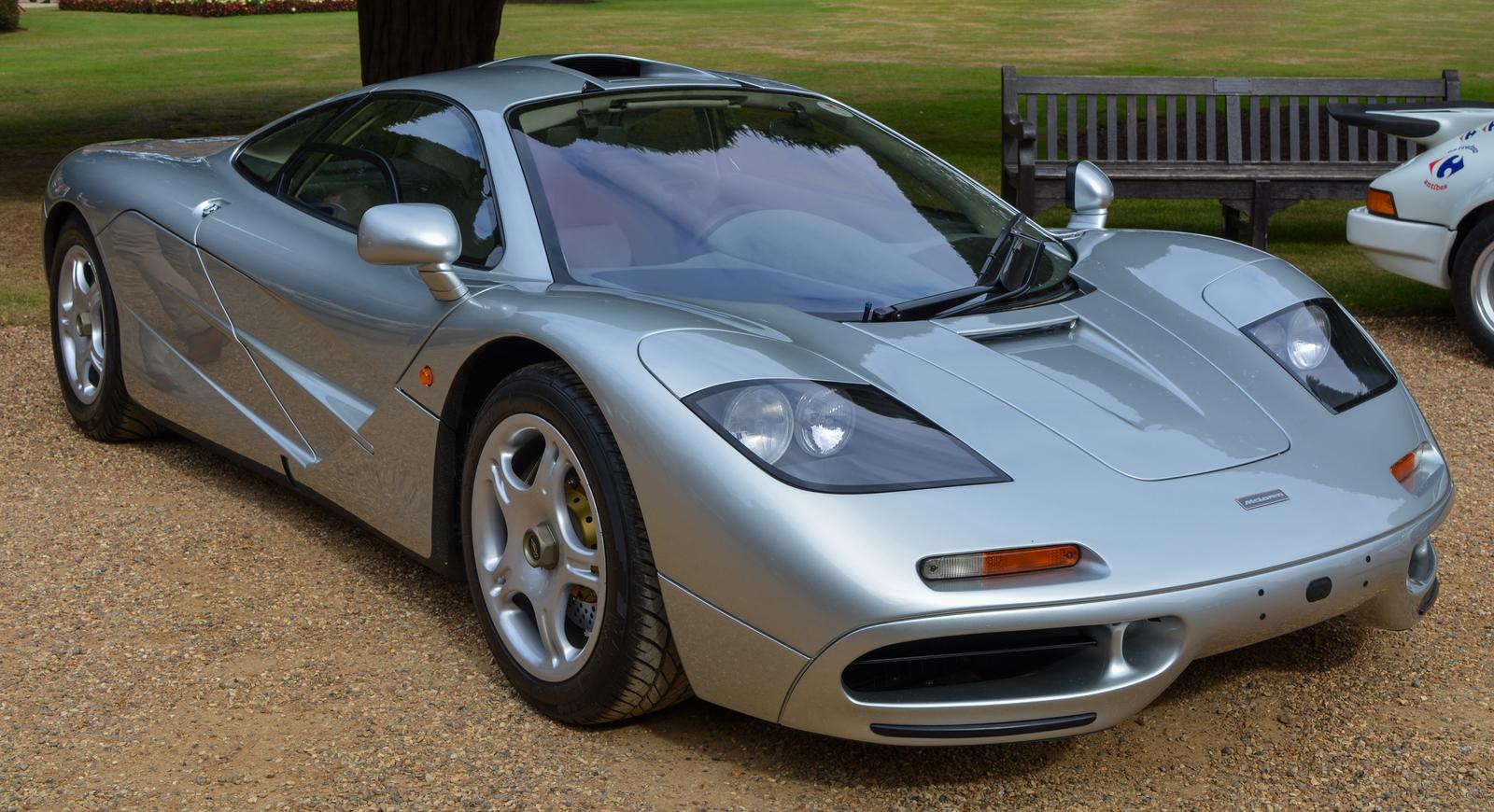In the fast-paced world of technology and innovation, few names resonate as profoundly as Sam Altman’s. Known for steering OpenAI to unprecedented heights in artificial intelligence, Altman is not just a tech visionary but also a connoisseur of luxury and speed on four wheels. In this exclusive feature, we delve into the fascinating world of Sam Altman’s car collection, a realm where cutting-edge technology meets automotive artistry. From the sleek lines of his McLarens to the eco-conscious elegance of his Tesla, each vehicle in Altman’s garage tells a story of passion, precision, and a relentless pursuit of excellence. Join us as we take a closer look at the cars that drive one of the tech industry’s most influential figures, exploring what these choices reveal about the man behind the machine.
Who is Sam Altman?
Sam Altman is a notable figure in the technology industry, recognized for his multifaceted roles as an entrepreneur, investor, programmer, and blogger. He is widely known as the CEO of OpenAI, a leading artificial intelligence research lab where he has overseen the development of groundbreaking AI models like GPT-3 and GPT-4. Before joining OpenAI, Altman made a significant impact as the president of Y Combinator, one of the most influential startup accelerators globally, which helped launch companies such as Dropbox, Airbnb, and Stripe.
In addition to his executive roles, Altman is an astute investor. He has made early-stage investments in several successful companies, including Airbnb, Stripe, Reddit, and Pinterest, contributing to his substantial net worth and prominence in the tech industry. His entrepreneurial journey began with co-founding Loopt, a location-based social networking mobile app, which was later acquired by Green Dot Corporation.
Altman’s background includes studying computer science at Stanford University, where he honed his skills and interest in technology. Beyond his professional endeavors, he is actively involved in the tech and business communities through public speaking and blogging, often sharing his perspectives on technology, startup culture, and economic trends. His influence in technology, particularly in artificial intelligence, positions him as a key figure in shaping the industry’s future.
On the afternoon of November 17, 2023, OpenAI announced in a blog post that Sam Altman, its high-profile chief executive and a prominent figure in the tech industry’s artificial intelligence surge, has been removed from his position by the company’s board of directors.
Late on November 20th, OpenAI announced an “agreement in principle” for the reinstatement of Altman as CEO and Brockman as president.
Sam Altman’s Net Worth and Salary

Sam Altman’s net worth as of 2023 is estimated to be substantial, though there are varying reports on the exact figure. According to several sources, his net worth is estimated to be between $250 million and $500 million. However, another source suggests that it could be as high as between $500 million and $700 million. This wealth is largely attributed to his roles as a prominent tech entrepreneur and investor, particularly his positions at Y Combinator and OpenAI. His net worth is also bolstered by his early-stage investments in successful companies such as Airbnb, Stripe, Reddit, and Pinterest.
As for his salary, specific details about Sam Altman’s annual income or salary as the CEO of OpenAI are not readily available in public sources. Typically, the salaries of executives in private companies like OpenAI are not disclosed publicly and can vary greatly based on the company’s performance, the individual’s contract, and other factors.
Sam Altman Car Collection
Sam Altman, known for his role at OpenAI, has a notable interest in cars. He reportedly owns an impressive collection, which includes five sports cars. Among these, two are McLarens, and one is an older model Tesla. Despite his expansive collection, Altman is also known to frequently use UberX for travel around town, suggesting a practical approach to transportation alongside his passion for cars.
McLaren F1

The McLaren F1, conceptualized by Gordon Murray in 1989, stands as a significant milestone in automotive design. Gordon Murray, renowned for his contributions to Formula 1 car design in the 1970s, channeled his expertise into creating what many consider a quintessential street-legal race car.
The heart of the McLaren F1 is its 6.1-liter BMW V12 engine, which produces 627 horsepower and 479 lb-ft of torque. This engine was specifically chosen for its balance of power and reliability. It enables the car to achieve a top speed of 240 mph, a remarkable feat at the time of its release. Additionally, its acceleration is noteworthy, achieving 0 to 60 mph in a swift 3.2 seconds. The rear-wheel-drive layout, coupled with a six-speed manual transmission, offers a pure and engaging driving experience, reminiscent of traditional race cars.
The body of the McLaren F1 is crafted from lightweight materials like carbon fiber, titanium, gold, and magnesium, contributing to its low weight of just 1,138 kg (2,509 lbs). This not only aids in performance but also in agility and handling. The car’s aerodynamic design, including its distinctive streamlined shape and downforce-inducing features, was meticulously developed to enhance stability and speed.
Inside, the McLaren F1’s cabin is a blend of luxury and functionality. The central driving position provides a panoramic view and a unique driving experience. The car’s interior is trimmed with fine materials, and despite its focus on performance, it doesn’t compromise on comfort and practicality. Each McLaren F1 was customized to the buyer’s specifications, making each model distinct.
The McLaren F1 also introduced several technological innovations. It was one of the first production cars to use a carbon-fiber monocoque chassis, contributing to its exceptional strength and lightweight. The engine bay is famously lined with gold foil for its heat-reflective properties, showcasing a blend of luxury and function.
Beyond its technical prowess, the McLaren F1 holds a special place in automotive history. It was a trailblazer in terms of performance and design, setting standards that would influence supercar design for years to come. Its rarity – with only 106 units produced – adds to its allure among collectors and enthusiasts.
There is a video on how Sam Altman stepped into his $20M Mclaren F1.
Tesla Roadster (first generation)

The first-generation Tesla Roadster, launched in 2008, marked a significant turning point in the automotive industry as it was the first highway-legal electric vehicle to use lithium-ion battery cells and the first electric vehicle to travel more than 200 miles per charge. Its introduction played a pivotal role in changing public perception about electric vehicles (EVs) and demonstrated that they could be desirable and viable.
The Tesla Roadster’s design was based on the Lotus Elise, with which it shared around 6% of its components. It showcased a sleek, sporty aesthetic, embodying the appeal of a high-performance sports car. The car was powered by a 3-phase, 4-pole AC induction motor, generating 248 horsepower (185 kW) in the original Roadster and 288 horsepower (215 kW) in the Roadster Sport version. This enabled the Roadster to accelerate from 0 to 60 mph in less than 4 seconds, with a top speed of around 125 mph.
A defining feature of the Roadster was its lithium-ion battery pack, which was a technological breakthrough at the time. This battery pack provided a range of over 200 miles per charge, a significant improvement over other electric cars of that era. Tesla’s innovative battery technology and power management systems were key factors in achieving this range.
The Tesla Roadster’s launch was more than just the introduction of a new car; it was a bold statement about the future of electric vehicles. It challenged existing perceptions by offering a combination of performance, range, and desirability that had not been seen in the EV market before. The Roadster proved that EVs could be exhilarating to drive and practical for everyday use, paving the way for a new generation of electric vehicles.
The production of the first-generation Roadster continued until 2012, with around 2,450 units sold in over 30 countries. It was a limited-production car, which added to its exclusivity and appeal among car enthusiasts and collectors.
The first-generation Tesla Roadster was a groundbreaking vehicle that set new standards for electric vehicles in terms of performance, range, and design. Its introduction played a crucial role in the advancement of EV technology and helped establish Tesla as a significant player in the automotive industry. The Roadster’s legacy continues to influence the development of electric vehicles and Tesla’s subsequent models.
Lexus LFA

According to the website supercarblondie.com, Sam Altman also owns a Lexus LFA, which is part of his auto collection. The Lexus LFA is a remarkable and rare vehicle in the world of supercars, uniquely combining luxury, performance, and cutting-edge technology. Produced in a limited run of only 500 units by Lexus, Toyota’s luxury vehicle division, the LFA is highly sought after for its exclusivity and collectability. Its design is a testament to advanced engineering, featuring a carbon fiber-reinforced polymer body which contributes to its lightweight yet strong structure, enhancing both performance and handling.
At its core, the LFA houses a powerful 4.8-liter V10 engine capable of delivering 552 horsepower, enabling the car to sprint from 0 to 60 mph in just 3.6 seconds and reach a top speed of approximately 202 mph. This engine, developed with Yamaha’s expertise, is not only about power but also about the experience, as it produces a high-revving character and a distinctive, melodious sound. The acoustic quality of the engine’s roar is so unique that Yamaha’s musical instrument division was involved in tuning it, making the LFA’s exhaust note a symphony in itself.
The interior of the LFA is as luxurious as its exterior, with high-quality materials, advanced technological features, and a design focused on the driver, offering a blend of comfort and exhilaration. The LFA’s impact on the market was significant at its release, firmly placing Lexus in the high-performance supercar segment and showcasing Toyota’s commitment to innovation and engineering excellence.



